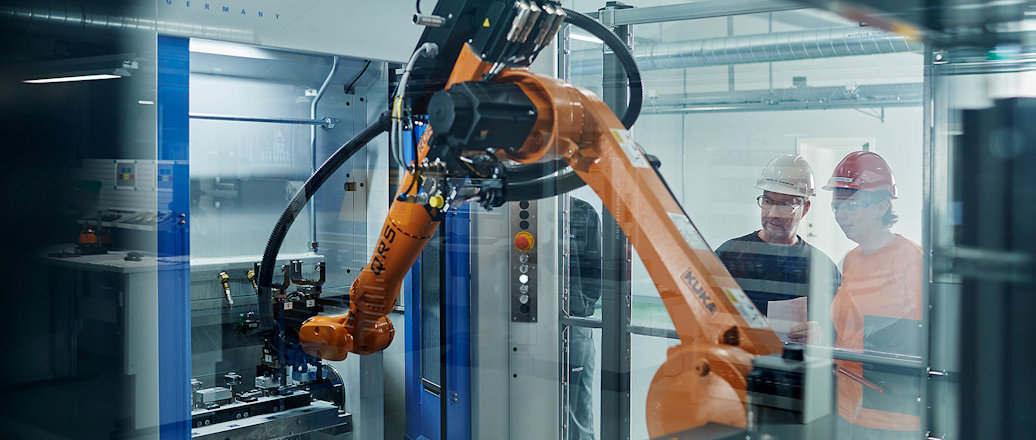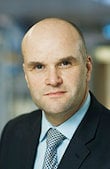- Underlying EBIT NOK 1,407 million
- Strong cash generation
- Markets continue recovery from Q2 lows
- Extruded Solutions uEBITDA up 28% vs Q3 2019
- Paragominas maintenance finalized, Alunorte ramping up to nameplate capacity
- RSK value secured through Hydro-Lyse transaction
- Positive developments in EU regulatory framework
“Our top priority is the health and safety of our people and the communities where we operate. Hydro’s organization is maneuvering the Covid-19 situation, protecting people and operations while generating cash. I am pleased to see strong cash generation as a result of our efforts. At the same time, we are pursuing our profitability and sustainability agenda, strengthening our low-carbon position and exploring new growth areas,” says President and CEO Hilde Merete Aasheim.
Extruded Solutions experienced a faster-than-expected recovery, especially in Europe, a favorable cost position and insurance compensation of NOK 192 million related to the cyber-attack in 2019. Reduced raw material costs, improved fixed costs and positive currency effects, as both the NOK and BRL weakened against the USD and EUR, all contributed positively to the third quarter result. The positive elements were offset by a lower result from Bauxite & Alumina, due to the Paragominas maintenance and reduced realized alumina and aluminium prices.
On August 18, Hydro halted operation of the pipeline transporting bauxite from Paragominas to Alunorte for extended maintenance to replace a section of the pipeline earlier than planned, temporarily halting production at Paragominas and reducing production at Alunorte to 50 percent of full capacity. On October 8, Paragominas resumed production. Alunorte is now ramping up production towards nameplate capacity.
“I am happy to see Alunorte back on track and ramping up production. We have also decided to resume full production at our Husnes plant in Norway by end of November, after running at half capacity since the financial crisis in 2009. Husnes is among the most climate-efficient aluminium plants in the world, producing a material acknowledged by the European Union as an essential building block for the low-carbon, circular society,” says Aasheim.
Global GDP and industrial production have recovered during the quarter, but the Covid-19 situation continues to cause market uncertainty. The global fall in demand and government-imposed restrictions have negatively affected operations during the quarter. The Covid-19 situation has mostly affected Extruded Solutions and Rolled Products, although order intake and capacity utilization have improved. Bauxite & Alumina, Primary Metal, Metal Markets recycling facilities and Energy have been operating largely as normal during the quarter.
Hydro’s improvement efforts are moving forward with full speed, focusing on the cost levers we can control in these uncertain times. The target NOK 4.1 billion by 2020 is behind plan due to the pipeline maintenance. However, the overall 2023 goal of NOK 7.3 billion in improvements remains.
The EU's revised guidelines for CO2 compensation pave the way for continued production of low-carbon aluminum in Norway. For Hydro's renewable energy-based aluminum production, predictable and robust compensation of the actual CO2 surcharge in power prices will make a critical contribution to our operations. “Low-carbon aluminium products can play a crucial role in reducing global CO2 emissions, meeting the growing demand for these products in a number of sectors, including transport and construction,” says Aasheim.
In addition, The European Commission announced on September 22, 2020, its decision to impose provisional antidumping duties on aluminium extrusions originating in China. The duties are an outcome of an investigation opened in February 2020. The European Commission has now found that Chinese extrusions have been sold in the European Union at prices so low that they can be considered dumping and unfair competition to EU producers.
For Hydro’s around 40 extrusion plants in Europe, the antidumping action is a move that will mitigate unfair competition. For Hydro’s customers, this will contribute to making sure Europe continues to have a viable extrusion industry which will still face strong competition due to the many players in the market.
Hydro's net debt position decreased from NOK 13.2 billion to NOK 9.9 billion at the end of the quarter. Net cash provided by operating activities amounted to NOK 4.5 billion. Net cash used in investment activities, excluding short term investments, amounted to NOK 1.5 billion.
Hydro held NOK 17.5 billion in cash and cash equivalents and NOK 4.2 billion short-term deposits, included in short-term investments, at the end of the third quarter. The revolving credit facility of USD 1.6 billion was fully available at the end of the quarter.
Cautionary note
Certain statements included in this announcement contain forward-looking information, including, without limitation, information relating to (a) forecasts, projections and estimates, (b) statements of Hydro management concerning plans, objectives and strategies, such as planned expansions, investments, divestments, curtailments or other projects, (c) targeted production volumes and costs, capacities or rates, start-up costs, cost reductions and profit objectives, (d) various expectations about future developments in Hydro's markets, particularly prices, supply and demand and competition, (e) results of operations, (f) margins, (g) growth rates, (h) risk management, and (i) qualified statements such as "expected", "scheduled", "targeted", "planned", "proposed", "intended" or similar.
Although we believe that the expectations reflected in such forward-looking statements are reasonable, these forward-looking statements are based on a number of assumptions and forecasts that, by their nature, involve risk and uncertainty. Various factors could cause our actual results to differ materially from those projected in a forward-looking statement or affect the extent to which a particular projection is realized. Factors that could cause these differences include, but are not limited to: our continued ability to reposition and restructure our upstream and downstream businesses; changes in availability and cost of energy and raw materials; global supply and demand for aluminium and aluminium products; world economic growth, including rates of inflation and industrial production; changes in the relative value of currencies and the value of commodity contracts; trends in Hydro's key markets and competition; and legislative, regulatory and political factors.
No assurance can be given that such expectations will prove to have been correct. Hydro disclaims any obligation to update or revise any forward-looking statements, whether as a result of new information, future events or otherwise.
Published: October 23, 2020


